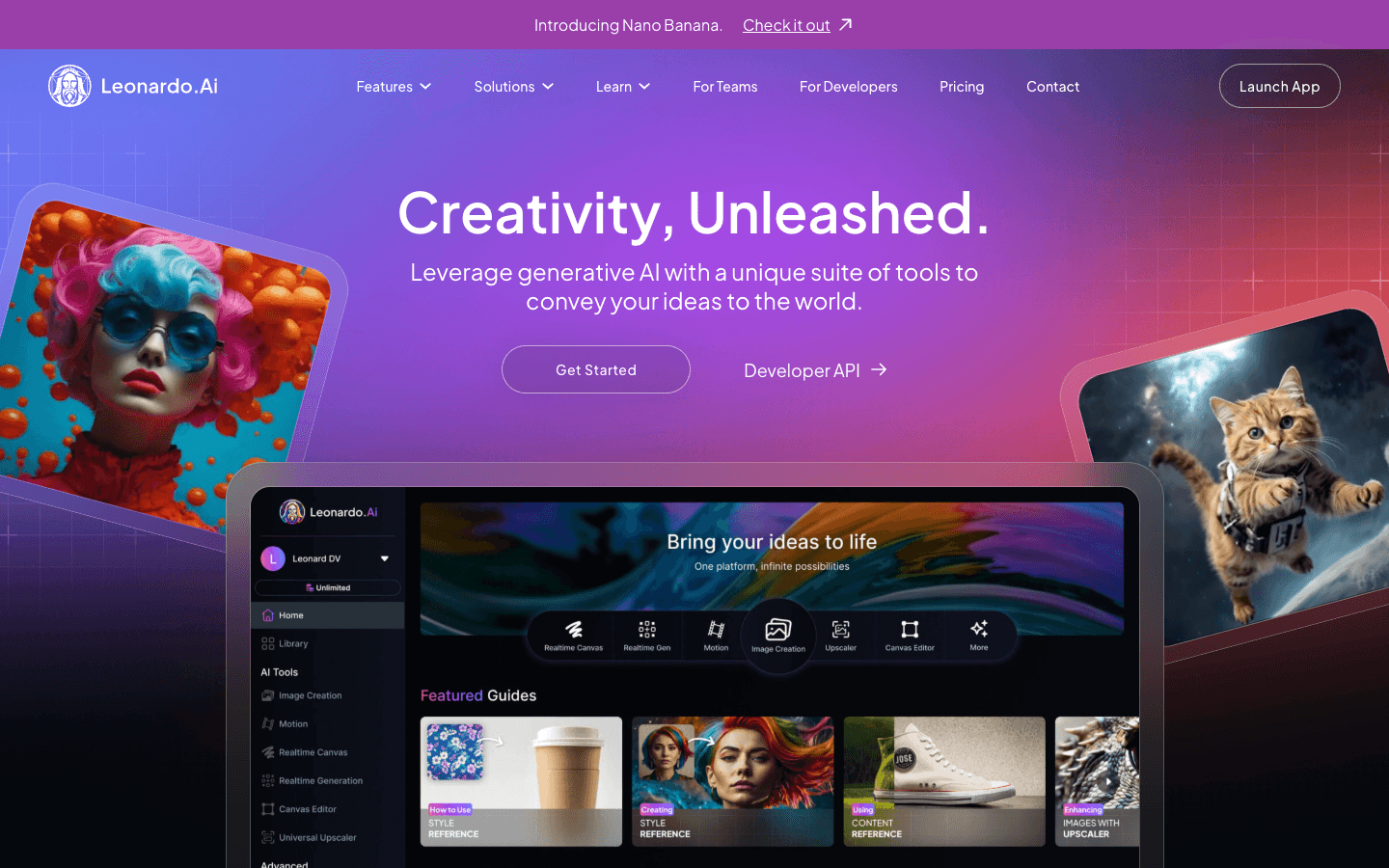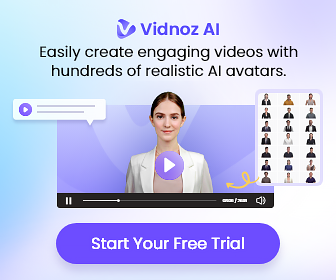
Leonardo AI
AI Image Generator for Art, Video & Design

Overview
Leonardo AI (https://leonardo.ai/) is a production-ready generative platform built for creators, teams, and developers who need high-quality images, animations, and textures at scale. As an AI image generator and creative suite, Leonardo AI combines a library of fine-tuned models, an intuitive Canvas editor, advanced upscaling, and an extensible API so you can move from prompt to production efficiently.
At its core, Leonardo AI offers a selection of specialized models optimized for different outputs: cinematic renders, photorealism, anime, 3D-friendly albedo maps, and experimental community models. Flow State streamlines ideation by returning a curated stream of variations from a single prompt. Image Guidance and ControlNet features give precise control over composition, reference matching, and structure.
The Universal Upscaler improves definition for print, marketing, and high-resolution deliverables, while dedicated 3D texture generation allows designers to upload OBJ files and receive context-aware textures ready for pipelines. Leonardo AI supports a freemium model with daily Fast Tokens for casual use and multiple paid tiers for hobbyists, professionals, and enterprises.
Paid plans unlock private generations, model training, unlimited relaxed generation for first-party models, shared token pools for teams, and priority support. Developers can integrate Leonardo into apps and pipelines using a tiered API with credits and concurrency limits. What sets Leonardo AI apart is the combination of practical production features and community-driven innovation. The platform is SOC 2 Type I and Type II accredited, indicating enterprise-grade security for teams and studios.
A large creator community on Discord and galleries on the platform accelerate learning and reuse of prompts, presets, and models. Whether you need a quick concept pass, a high-fidelity hero image, a set of game-ready textures, or programmatic generation through the API, Leonardo AI balances creative control, throughput, and governance. Visit https://leonardo.ai/ to explore models, pricing, and documentation, or launch the app to start generating.
Core Features
- Fine-tuned model library - choose cinematic, photoreal, anime, or CG-focused models
- Flow State prompt stream - explore many variations from one prompt quickly
- Image Guidance and ControlNet - precise reference and structure control
- Universal Upscaler - increase resolution and detail for print-ready assets
- AI Canvas editor - erase, refine, and iterate in a pixel-accurate workspace
- 3D texture generation - upload OBJ files and get context-aware textures
- Token-based usage and Relaxed Generation - manage cost and continuous creation
- Developer API - integrate image, video, and model training into apps
Use Cases
- Concept art and moodboards for game and film production
- Marketing hero images and campaign asset generation at high volume
- Product photography mockups and rapid e-commerce visuals
- Character design and RPG portrait creation for studios
- 3D texture generation for VFX and real-time engines
- Print-on-demand art and merchandise design workflows
- Social media content and short-form video generation with Veo
- Architecture and interior design concept renders and isometrics
- Agency workflows for multi-seat team collaboration and asset sharing
- White-label integration via API for SaaS and creative tools
Pros & Cons
Pros
- Wide selection of fine-tuned creative models
- Powerful upscaler for production-quality images
- Realtime Canvas for pixel-level edits
- 3D texture pipeline support
- Flow State accelerates ideation
- Team plans with shared token pools
- Robust API for developers
- Relaxed Generation avoids hard stops
- Active community and shared presets
- SOC 2 compliance for enterprise security
- Token rollover and top-up flexibility
- Mobile apps for on-the-go creation
Cons
- Some third-party models always consume tokens
- Relaxed Generation can introduce wait times
- Free-tier images are public by default
- Video generation costs more tokens
- Steep learning curve for advanced features
- Third-party model availability varies
- Concurrency limits on heavy pipelines
FAQs
Video Review
Leonardo AI Alternatives

Dreamina AI
Dreamina AI - Text-to-Image and Video Creator

Wondershare Virbo
Generate Engaging AI Videos in Minutes!

Hyperspace
Get Access to 1000+ AI-models with One Subscription

RunComfy
RunComfy: Top ComfyUI Platform - Fast & Easy, No Setup

Writingmate AI
ChatLabs: All the Best AI Models in One Place

Pippit AI
Free AI video generator for e-commerce and social

Higgsfield AI
Cinematic AI video generator with pro VFX control

Dzine AI
Controllable AI image and design studio
Featured

Neurona AI Image Creator
AI image generator; AI art generator; face swap AI

Blackbox AI
Accelerate development with Blackbox AI's multi-model platform

Google Nano Banana
Fast multimodal Gemini model for production

AI Book Summarizer
AI Book Summarizer That Makes Books Easy to Grasp

Sora 2
Transform Ideas into Stunning Videos with Sora 2

AI Text Summarizer
AI Text Summarizer That Rocks: Faster Content Analysis

Higgsfield AI
Cinematic AI video generator with pro VFX control

Tidio
Smart, human-like support powered by AI — available 24/7.

Animon AI
Create anime videos for free

ChatGPT Atlas
The browser with ChatGPT built in

Wan AI
Generate cinematic videos from text, image, and speech

Ask AI Questions Online
Ask AI Questions for Free – Smart, Fast, and Human-Like Answers

Abacus AI
The World's First Super Assistant for Professionals and Enterprises

Free AI PDF Reader
Free AI PDF Reader – Smarter Way to Understand Any PDF

Free AI Article Summarizer
Free Article Summarizer

Kimi AI
Kimi AI - K2 chatbot for long-context coding and research

